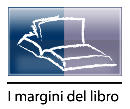 |
5, 2011 | |||
| Abstracts | versione italiana | |
| Article |
Kurt Flasch
Deutsche Dantedeutung 1942: vom Rande her gesehen.
Bemerkungen von Giuseppe Zamboni über Hugo Friedrich, Die Rechtsmetaphysik der göttlichen Kommödie
An author: Dante. A text: the Rechtsmetaphysik der göttlichen Kommödie by Hugo Friedrich (Frankfurt/M., Klostermann 1942). A copy of this well-known and controversial book is preserved at the library of the Institute for Italian Studies at the University of Basel (ITA IL Dante 20.50). It offers a precious opportunity to reflect upon the meaning of this work both in the context of German-language criticism on Dante, and of historical and intellectual research into Medieval culture. The item at Basel contains reading notes − underlinings and short marginalia − by its owner and reader, Giuseppe Zamboni, who was professor of Italian literature at Basel, and whose precious library partly contributed to the University library. It stimulates doubts and reservations on an interpretation of the Commedia as a ‘correction’ of modernity, and as refraining from an emotionally involved reading of the text for the sake of severe ‘metaphysical’ rigour. The analysis leads to the discovery and a brief but significant sample of different and vigorously conflicting conceptions of the Middle Ages.
| versione italiana |
| Article |
Simone Ochsner
«Underlig Blandning i Fieldene», «Wunderliche Vermischung in den Bergen». Marginalien und die Frage der Autorität
«No. IV. Stellet vor den Berg bey Stenesund. Es gehört zum §. 7. eben dieses Kapitels, und ist am Rande bemerkt». This quotation is part of the survey over the copper engravings in Erik Pontoppidans Versuch einer natürlichen Geschichte Norwegens (1753). Starting from this quotation I am going to look into the relations between the main text and the marginal notes and further paratextual elements of the 7th paragraph (chapter II, part I), which deals with the geological formation of stone at Stenesund.
| versione italiana |
| Article |
Francesca Antonioli
Lettere dedicatorie di Francesco Osanna ai Gonzaga
Francesco Osanna's printing office excells in Mantua between 1570 and 1600. The analysis of the works printed by the publisher's types, shows that the 25% of the editions reproduces a dedicatory letter addressed to a member of the powerful Gonzaga family, the ruler of the town at the time; you may also notice that ten of these deications are signed by the publisher himself. The reflection upon the content and the form of Osanna's texts allows you to draw some important information about the life and the cultural history of the XVI century publishing. From a formal point of view the letters basically belong to the tradition of the dedicatory literature. The analysis of the content shows some less obvious aspects of publishing, of the publication of a work, of the characters around the author and of the problems concerning the edition itself; in this way the analysis widens the vision in regard to the masterpieces of the XVI century Italian literature
| versione italiana |
| Article |
Marianna Villa
Ai margini del Cortegiano: la dedicatoria d'autore al Da Silva
The dedication to Da Silva, written by Castiglione between 1527 and 1528 while the Courtesan is published in Venice, forms a double system of dedications. It was superimposed on the preface of the four books, dedicated to Alfonso Ariosto, who had died in the meantime. This investigation about the strategies of the new dedication, its presentation, its functions shows the relationship between the two systems of dedications. In 1527 Castiglione justifies the difficulties around the printing process and he promotes the Courtesan to his readers, giving an esegetical function to his new dedication.
| versione italiana |
| Article |
Ilaria Bonincontro
Il paratesto nella digitalizzazione di edizioni tradizionali
The concept of paratext was theorized by Genette in the 80's. It is a set of items that surround the authorial text and is usually associated with books. The paratext introduces the text and may influences how a text is interpreted; paratext is often subject of analysis as a source for the cultural contextes. In the digital era the paratext acquires more functions, it guides the user in text reading. The question is: does the traditional paratext, component of the analogic, material text, keep its role if it is digitalized? Is it the digitalization enough to allow the computer to manage paratext and to distinguish between paratext and main text? The idea is that both paratext and main text must me encoded in order to become data, that the computer may analysed. The encoding is a new type of paratext, or better, is the metatext that guides the computer in text management.
| versione italiana |
